SEO is one of the most dynamic areas of digital marketing because Google is always updating its ranking algorithm to make search a better experience for users. That means each year, marketers have the opportunity to reevaluate the SEO trends shaping the search engine landscape.
That being said, read on for the top 12 SEO trends to watch out for in 2023 and how to align your strategy with them.
Table of contents
- The new “E” in E.E.A.T
- Audience-targeted, not traffic-targeted content
- Increased emphasis on author authority
- Satisfying, helpful content
- A.I content and content writing software
- SEO automation
- Changes to CTRs by SERP positions
- Product page SEO
- SEO competitor analysis
- Less crawl frequency
- Image SEO revitalized
- Fast-loading, high-performing websites
The top SEO trends to align with in 2023
This year is all about displaying expertise and value in our content and continuing to provide high-performing web pages for users. These strategies have always been important throughout the history of SEO, but Google is getting better at evaluating signals and determining what content is actually meeting these standards.
Let’s take a closer look at what I mean and how you can meet those standards.
1. First-hand experience on a topic (the new “E” in E-EAT)
As of December 2022, Google’s popular EAT acronym, (Expertise, Authority, Trust) has gotten an additional E: Experience, making it E-EAT. Google will now consider the experience of the author or creator when evaluating the quality of content.

So what does “experience,” actually mean? Google wants to see that a content creator has first-hand, real-world experience with the topic discussed.
For example, as the founder of an SEO agency, I have real-world experience and can speak authoritatively on SEO trends that will arise in 2023. However, If I were to create a piece of content on a health website about common causes of heart disease, that would undermine the quality of the content, because I am not a medical professional and have no experience in healthcare.
That means more websites need to take a closer look at not just who their content creators are, but what topics they’re focusing on.
Which leads me to the next two trends.
2. Audience-targeted, not traffic-targeted content
One reason for this increased emphasis on experience is because SEO content creation is proliferating. But if a website that sells financial software is producing blog posts with food recipes, Google crawlers are going to get suspicious. Because does that content actually benefit the target audience of financial software customers? Or, does it help that the website rank for certain high-volume keywords?
You already know the answer. The reality is, businesses whose content strategy is to simply go after search traffic with little or no consideration of what users actually want are unlikely to see ranking success in 2023. Sticking within your general topic and industry areas is essential for creating rank-worthy content.
Not sure what topics to explore in your content? A content planning tool can help you discover relevant industry topics that your target audience is searching for. Enter a keyword, and the tool will show you the many semantically related keywords that users are typing into the search bar.
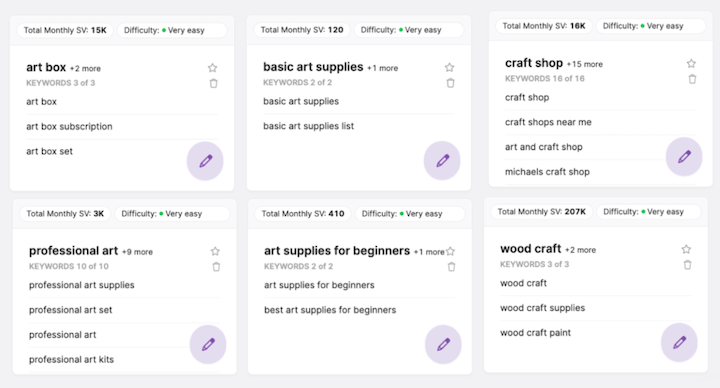
3. Increased emphasis on author authority
Another reason for Google’s emphasis on experience is the rise of auto-generated content ranking in the SERPs. Google wants to make sure that the content that ranks in 2023 is produced by real people with real audiences in mind.
So what can you do to elevate both the experience and authority of your creators this year? First and foremost, make sure that the people creating your content are, indeed, experts. Then, elevate their experience in the following ways:
- Include author bios to better and more fully communicate your content creator’s knowledge and areas of expertise
- Create author pages where you link out to all of the articles on your website that are written by the author
- Link your creators’ social media accounts so Google can more easily understand through social signals that they are real people and real experts.
Here is an example of a great author bio that helps elevates the experience and authority of the creator as a PPC expert
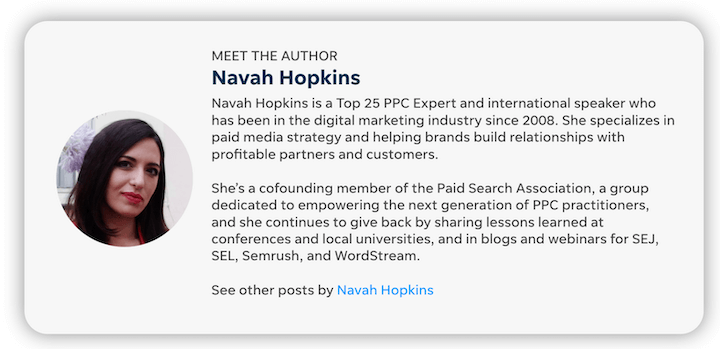
4. Satisfying, helpful content
Google’s August 2022 helpful content update is another important algorithm update that will impact how we create content in 2023.
For its entire history, Google has always prioritized serving high-quality content to users. But its new emphasis on “helpful” states that users should feel “satisfied” by the content they click on in the SERPs.
User satisfaction, though, is not easy to measure or quantify. So what does Google mean by helpful? Content that is:
- Created for humans, not search engines.
- Appropriate for the target audience.
- Relevant to the primary topic or subject area of the website.
- Created by authoritative, experienced creators.
- Displays a depth of knowledge about the topic.
(Noticing a theme yet in this year’s SEO trends?)
Creating helpful content is easier said than done. So how can you make your content more helpful?
First, focus on quality, not quantity. Although there are likely a lot of target keywords on your content calendar in 2023, pumping out a high volume of content that is thin on helpfulness and low on expertise is unlikely to produce top-ranking results in 2023.
Second, expand your keyword research to include information beyond just search volume. Consider the following:
- What types of content are ranking for specific searches?
- How long is the content?
- What questions does it answer?
- What other subtopics or related questions does it explore?
- What links are included on the page?
- Who is the creator?
- What is their experience?
Keyword research and content research can provide all sorts of insights into these quality indicators, so make sure you don’t get distracted by potential organic traffic alone.
Check your search queries in Search Console to see what people are looking for that leads them to your particular blog posts. Learn more ways to use Google Search Console here.
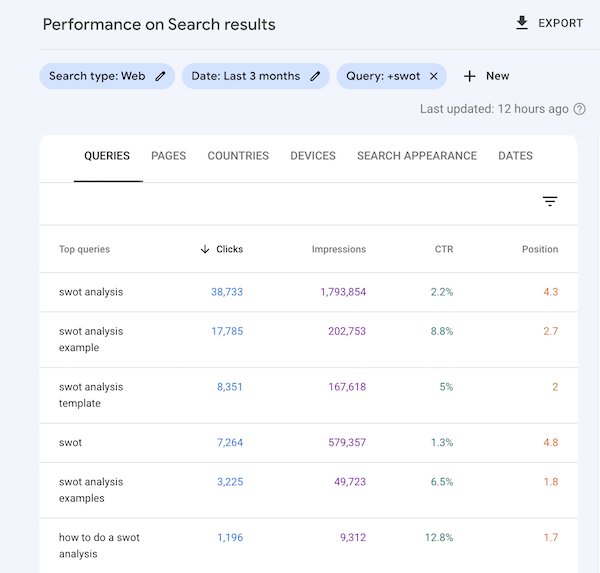
5. A.I content & content writing software
Despite all of the 2022 updates focused on combatting auto-generated content, the use of AI content will likely only increase in 2023.
The number of marketing applications that now integrate SEO and AI is only increasing. And it’s no wonder because these integrations can be incredibly time-saving! Most content marketers have utilized some version of these types of AI content generators over the past year.
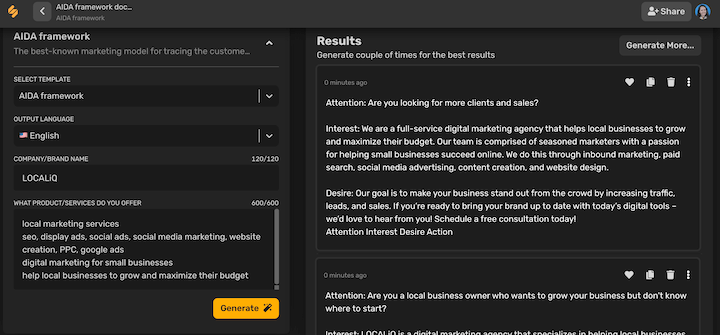
But with all of Google’s recent updates, can content-writing software be utilized safely?
Absolutely! Pumping out auto-generated drafts is a huge no-no, but marketers can certainly leverage these tools to help speed up their content workflows and still create original, quality content in the process.
Here are some of the more helpful applications of these tools that do not sacrifice the originality or people-centeredness of content:
- Content briefs: Content tools that generate content briefs can help your writers understand the important keywords, topics, and subtopics that should be included in their original content.
- Content outlines: Outlines are a great way to give your writers a roadmap for how to create helpful content without relying on AI to do the work for them.
- Content ideas: Tools like blog topic generators can speed up the brainstorming process. Moving from a keyword to a helpful content idea can be half the battle, and an idea generator can help prevent writer’s block. For example, here is an auto-generated blog idea that has been revised to include the website’s brand voice and be more tailored to the website’s younger target audience:Auto-generated:

People-first:

This is just one of many examples of how to use content writing software to better meet Google’s quality standards, not avoid or bypass them.
6. SEO automation
Like content AI, more and more SEO tasks will be automated in 2023 as digital marketers continue to leverage the power of enterprise SEO software platforms and tools.
For example:
- Keyword research tools can automate tasks that once required a lot of manual spreadsheet work.
- Site auditing and monitoring platforms like SearchAtlas and Content King can automatically detect changes and technical issues on websites.
- Website graders can help the less SEO-savvy to identify needed optimizations and prioritize accordingly.
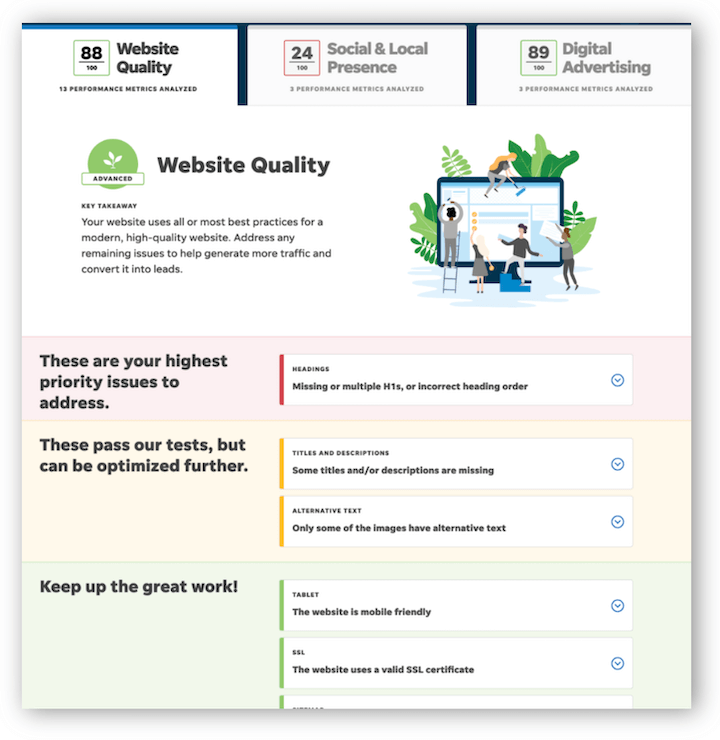
Try out our Free Website Grader!
The increase in these DIY SEO tools will also allow businesses and agencies alike to take care of tactics more efficiently and focus more on strategy.
7. Changes to CTRs by SERP positions
Get ready to change what you think you know about CTR and ranking positions.
With endless scrolling now available on both mobile and desktop, Google has made it far easier for users to scroll through multiple pages of SERP results to find the content they seek.
Over the years, the relationship between ranking position and CTR has remained fairly consistent, with the majority of clicks going to the first three results.
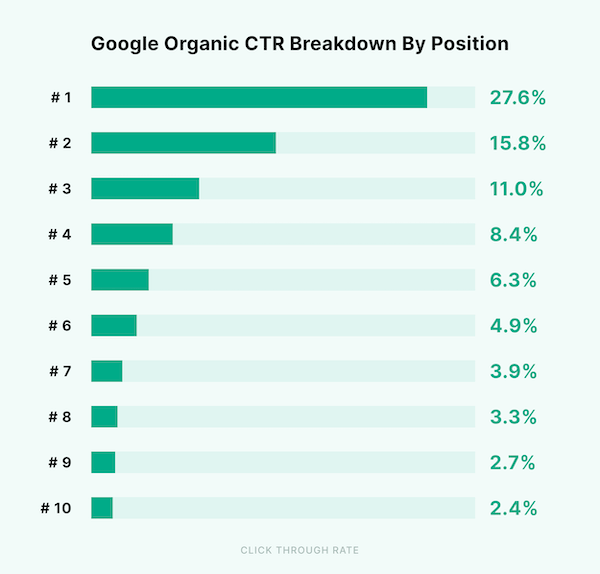
But in 2023, click-through rates are likely to be impacted as searchers more easily navigate across multiple pages of search results.
In terms of those dreaded zero-click searches, we’ve been hearing about for years, a recent SEMrush study showed that only about 25.8% of searches resulted in zero clicks. As Google continues to add more featured snippets and search features like People Also Ask, CTRs may not suffer from no clicks as much as originally thought.
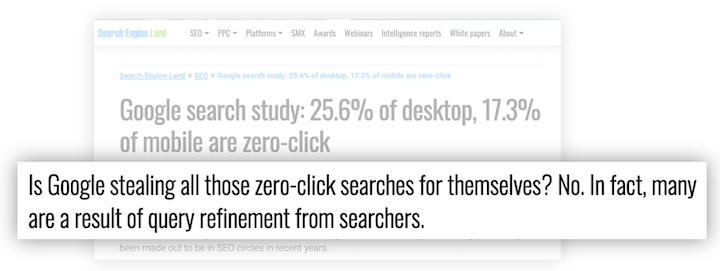
Although getting to the first page is still ideal, being on page two or three will have more benefits than it once did thanks to endless scrolling. So make sure that you are optimizing those page titles and meta descriptions and using features like schema markup to make your content more engaging and clickable in the SERPs.
8. Product page SEO
As Google continues to reward long-form, informative content, pages that tend toward thin content, like product pages, can benefit in 2023 from providing more helpful details on the page.
Drop-down menus, FAQs, and customer reviews are all ways to add additional content to a product page. Although adding keywords to the product description is helpful, think of other questions that users may want to be answered about the product before they purchase.
- Do you offer free shipping?
- What is the return policy?
- Are there warranties, upgrades, or add-ons available with the product?
- Are there customer testimonials or reviews that you can display with the product?

These are just a few ways to add additional content to a page that is actually helpful and informative for users who are considering a potential purchase.
9. SEO competitor analysis
Looking to competitors has always been a smart way to shape SEO strategy, and competitor analysis will become even easier and more effective in 2023 thanks to the help of SEO tools.
As Google places more emphasis on industry expertise and “topic areas” of websites, looking at the thought leaders in your industry will be a surefire way to understand what types of content in your industry will rank.
You can use SEO competitor software to compare competitors’ content, backlinks, Domain Authority, and more.
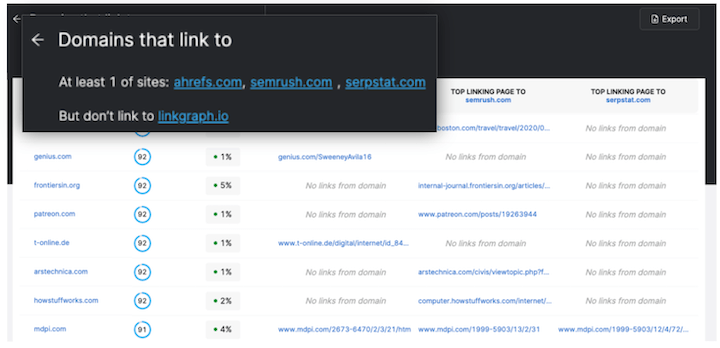
Look at the ways that your competitors are establishing experience, expertise, authority, and trustworthiness through both on-page and off-page signals and leverage those insights in your own SEO campaigns and content strategy. Learn more in our guide to keyword competitor analysis.
10. Less crawl frequency
Google has recently set big climate goals, including operating on carbon-free energy by 2023. To achieve that goal, Google has been considering reducing the frequency with which it crawls web pages.
Reducing crawling helps conserve computing resources, and is one of the easiest changes Google can make in line with its sustainability initiatives.
But reduced crawl rates are more likely to impact refresh crawls rather than crawls that discover new content. That means that it may take longer for Google to take notice of the new changes we make on our websites.
That’s why optimizing your content from the get-go, with all of the on-page elements it will require to rank, is the best strategic choice in 2023.
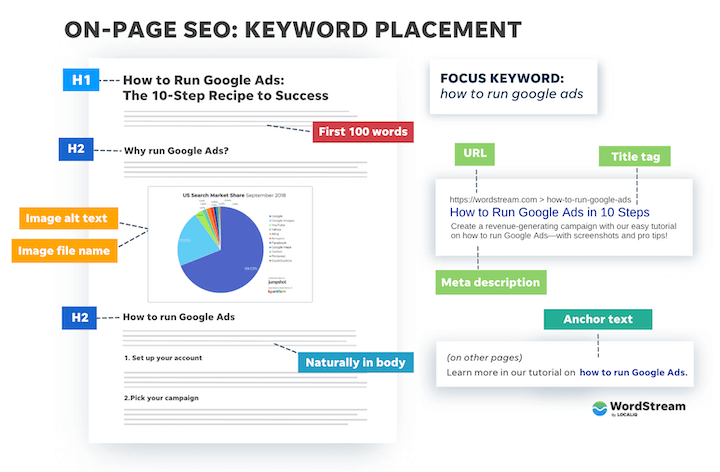
11. Image SEO revitalized
Images are often neglected on websites, but they have always played a role in better rankings for image searches.
They also can provide opportunities to include additional keywords and semantically-related terms into our content via alt text.
Google likes to see alt text and schema markup that help their crawlers better understand the content of images. Google also likes to see webmasters who make their content more accessible to all users. Alt text also helps make the internet a better place for those who are visually impaired or individuals limited by internet bandwidth or connectivity challenges.
Follow this image SEO checklist to make sure you are following all of the must-dos with images in 2023.
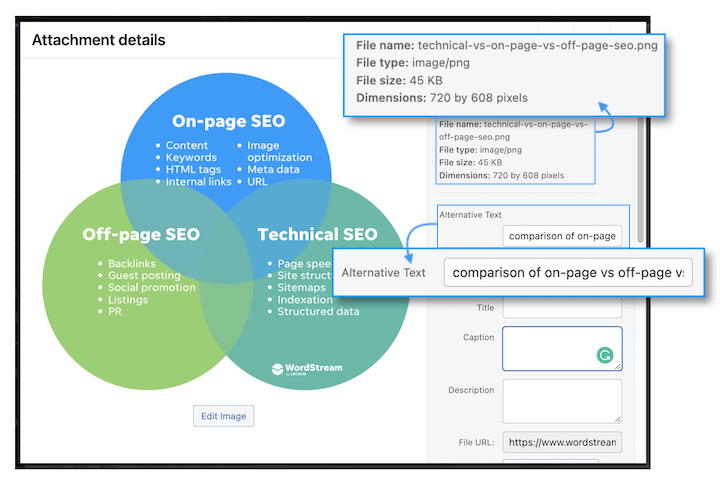
12. Fast-loading, high-performing websites
Ever since the page experience update of 2021, Google has placed more emphasis on high-performing, fast-loading websites in its ranking algorithm.
Although the page experience update may feel like old news, Google did not finish rolling out the update until March 2022, and it will continue to refine the signals it uses to determine whether a page is actually high-performing for users.
In 2023, Page Speed Insights and Core Web Vitals will still be essential tools for monitoring and evaluating the speed and performance of websites.
Alongside content quality, prioritizing page speed improvements is bound to pay off for businesses with increased keyword rankings for all of the web pages of their domain.

Weave these 2023 SEO trends into your strategy
In 2023, make sure to consider the below trends, as they are all directly shaped by Google’s algorithm updates, values, and goals. Also, make sure to leverage SEO tools to more easily and effectively meet Google’s increasingly higher standards for content.
- The new “E” in E.E.A.T
- Increased emphasis on author authority
- Satisfying, helpful content
- Niche-driven, topically-relevant content
- A.I content and content writing software
- SEO automation
- Changes to CTRs by SERP positions
- Product page SEO
- SEO competitor analysis
- Less crawl frequency
- Image SEO revitalized
- Fast-loading, high-performing websites
Interested in more SEO trends? Check out our archive:


0 Comments